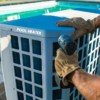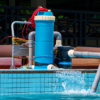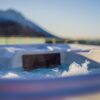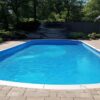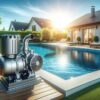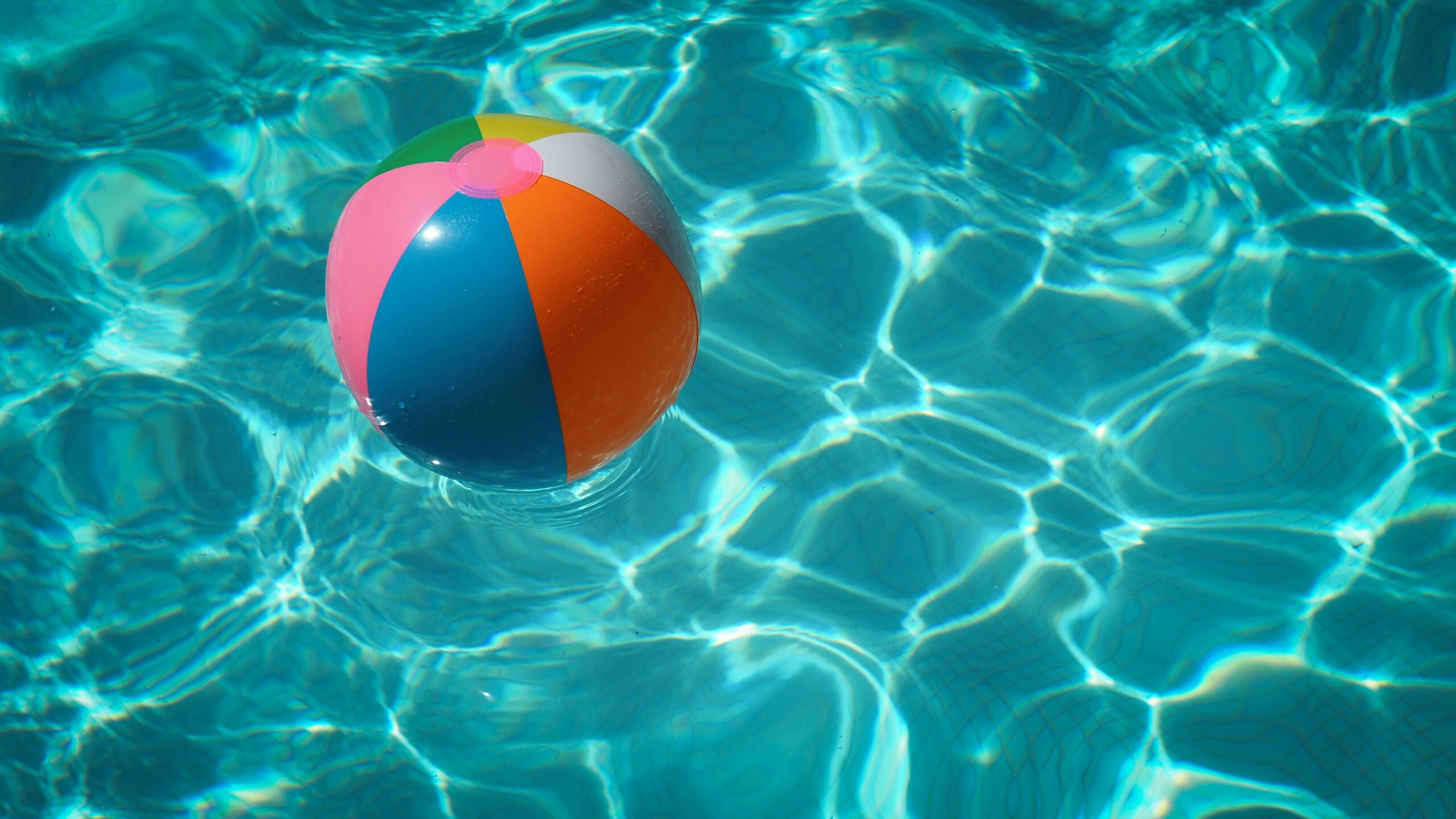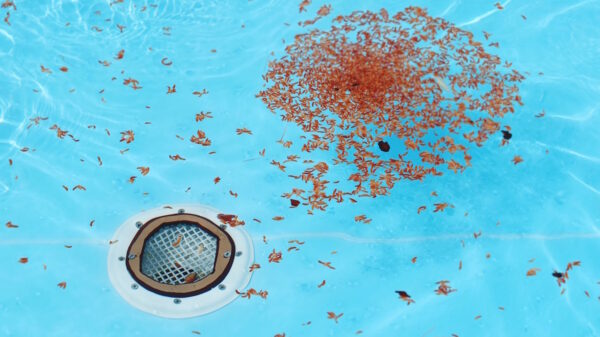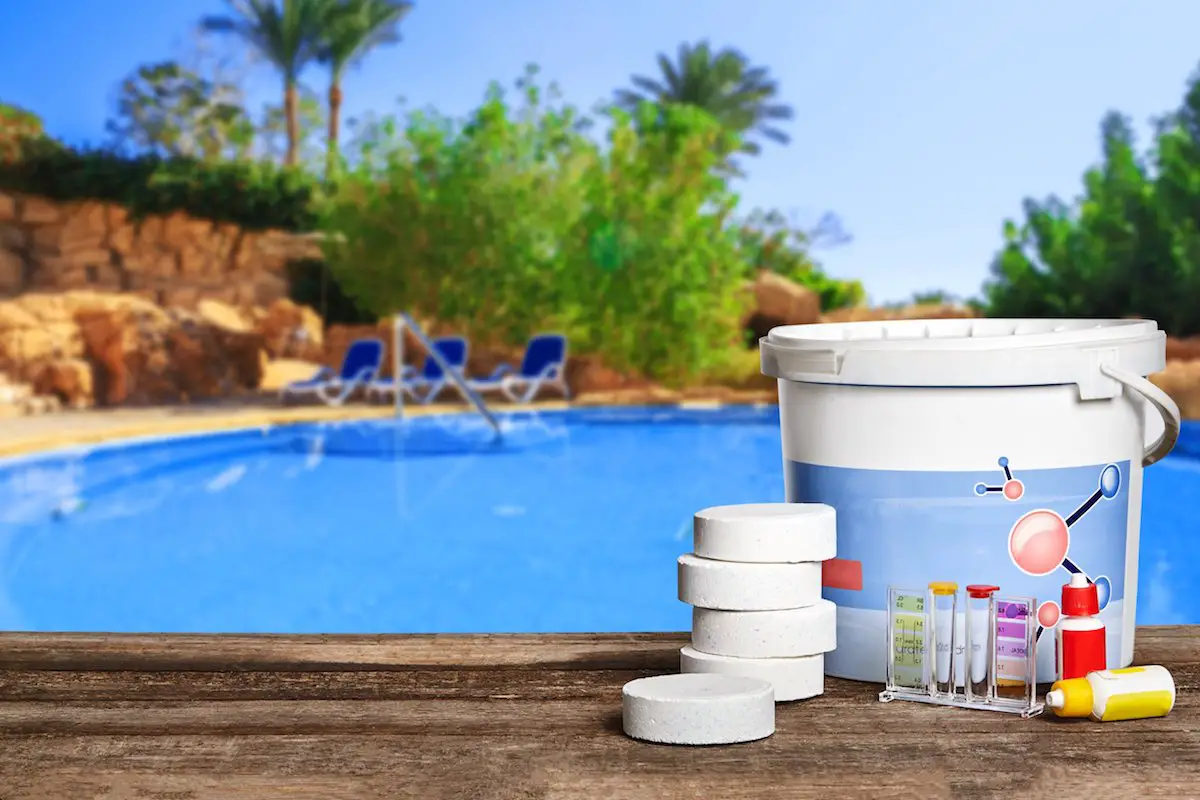Having a spa can transform your home into a daily getaway, offering relaxation and joy at your convenience. But to keep this experience enjoyable and safe, understanding and maintaining the proper water chemistry of your spa is essential. Through this article, we’ll guide you on how to achieve and maintain the perfect chemical balance, ensuring your spa remains a source of relaxation and not a cause for concern. Let’s take a look at this guide to easy water treatment for your simple spa.
Understanding Water Chemistry
Maintaining the Ideal Chemical Balance in Your Spa
Having a spa means enjoying a personal oasis right at your doorstep. However, to ensure a delightful and safe experience, keeping the spa water chemically balanced is crucial. Here’s a straightforward guide to achieving the perfect chemical harmony in your spa.
Understanding the Basics of Spa Water Chemistry
Water chemistry can seem daunting, but it’s about maintaining a balance that keeps the water clean, clear, and safe for your skin. There are three main factors you’ll need to monitor: pH levels, alkalinity, and sanitizer levels.
- pH Levels: This measures how acidic or basic your spa water is on a scale from 0 to 14. For spa water, the ideal range is 7.4 to 7.6. This slight leaning towards basic is comfortable for your skin and eyes and ensures that the sanitizers work effectively.
- Alkalinity: Acting as a pH buffer, alkalinity should be kept between 100 to 150 parts per million (ppm). Proper alkalinity levels prevent sudden pH level changes, making it easier to maintain a stable and comfortable water environment.
- Sanitizer Levels: Sanitizers keep your spa free from bacteria and other harmful pathogens. The common sanitizers are chlorine and bromine. For chlorine, aim for 1-3 ppm, and for bromine, keep it within 3-5 ppm. Remember, maintaining the correct levels is key to avoiding skin irritations and ensuring the water is microbe-free.

Steps to Maintain Ideal Chemical Balance
- Test Your Water Regularly: Before making any adjustments, test your water. You can use test strips or a liquid test kit to measure pH, alkalinity, and sanitizer levels. It’s recommended to test the spa water at least twice a week to keep everything in check.
- Adjusting pH and Alkalinity: If your tests show that your pH or alkalinity is off-balance, you can use pH increasers or decreasers and alkalinity increasers to make corrections. Always adjust alkalinity first, as it can affect pH levels.
- Sanitizing Your Spa: Add chlorine or bromine according to the instructions on the product packaging. Ensure you’re adding the right amount based on your spa’s water volume. Regularly check sanitizer levels, especially after heavy use, and adjust as needed.
- Shocking the Spa: Even with regular sanitizing, it’s essential to periodically “shock” your spa. This process involves adding a large dose of sanitizer to break down organic contaminants and clarify the water. Follow the instructions for the shock product recommended for your spa.
- Regular Maintenance: Alongside chemical maintenance, keep your spa clean. Clean the filters as recommended by the manufacturer, and periodically drain and refill your spa to start fresh.
Remember, the key to perfect spa water chemistry is consistency and patience. Regular testing and adjustments ensure a safe, clean, and enjoyable spa experience. By following these guidelines, you’ll maintain the ideal chemical balance, making every dip a blissful escape.
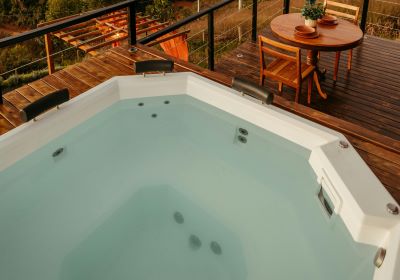
Sanitizing Your Spa
Maintaining a Clean and Sanitized Spa: The Essential Strategies
After diving into the basics of spa water chemistry, it’s clear that keeping your spa sanitized doesn’t stop with just understanding pH levels, alkalinity, and the role of sanitizers like chlorine and bromine. To ensure a truly clean and healthy spa environment, additional measures must be taken regularly. Let’s explore these crucial steps, which complement your foundational knowledge on maintaining the ideal chemical balance.
Filter Care: The heart of a clean spa is its filter. Just as our lungs filter air, the spa filter purifies water by trapping contaminants such as dirt, oils, and hair. To maintain its effectiveness, clean the filter fortnightly with a hose, ensuring you open each pleat to remove hidden debris. For a deeper clean, soak the filter overnight in a specialized filter-cleaning solution every two to three months, then rinse thoroughly. Remember, a clogged filter cannot properly clean water, making the rest of your efforts futile. Regular Water Replacement: Even with perfect chemical balance and filtration, contaminants can build up over time. Draining and refilling your spa water every 3 to 4 months is crucial. This refresh eliminates residual contaminants that neither filters nor chemicals can fully address. When refilling, seize the opportunity to clean the spa’s interior surfaces before adding fresh water. Spa Cover Maintenance: The spa cover is not just a lid but a protective barrier that keeps out pollutants and debris. It also prevents heat loss. However, if neglected, it can become a breeding ground for mold and mildew. Wipe the cover weekly with a mild, non-abrasive cleaner and treat it with a cover protectant every month to repel water and prevent fading from UV exposure. Always ensure the cover fits snugly and replace it if it becomes cracked or waterlogged, as a compromised cover affects spa hygiene and energy efficiency. Circulation and Aeration: Regularly circulating the spa water helps distribute chemicals evenly and filters out impurities. Aim for at least 15-20 minutes of circulation daily. Additionally, periodic aeration, which introduces air into the water system, can aid in oxidizing contaminants, enhancing water clarity and sanitation. Many modern spas have built-in aeration systems; use them according to the manufacturer’s instructions. Personal Hygiene: Lastly, the cleanliness of those using the spa contributes significantly to water quality. Encourage users to shower before entering to minimize the introduction of sweat, oils, and cosmetics into the spa. Similarly, remind everyone to avoid bringing beverages or food into the spa, as spills contribute to water contamination.
Combining Efforts for Maximum Cleanliness
Achieving a sanitized spa is a comprehensive effort that extends beyond chemical management. By incorporating these additional practices, you’re not only enhancing the cleanliness of your spa but also prolonging its life and ensuring the safety and enjoyment of all users. Remember, consistency in these steps is just as crucial as maintaining the chemical balance. Happy spa-ing!
Regular Spa Maintenance
Keeping Your Spa in Top Shape: Beyond the Basics
After diving into the essentials of spa water chemistry and understanding the pivotal role of consistent care, it’s time to explore additional steps that ensure your spa remains a haven of relaxation and cleanliness. Remember, maintaining a spa isn’t just about managing pH levels and sanitizers; it involves a holistic approach that covers various aspects of spa upkeep. Here’s how you can maintain your spa in top condition beyond the chemical balance.
Ensuring Proper Spa Usage
- Rinse Before Dipping: Encourage everyone to take a quick rinse before entering the spa. This simple step helps minimize the introduction of oils, lotions, and sweat into the spa water, reducing the potential strain on your spa’s filtration system and chemical balance.
- Limit Soak Time: Prolonged usage isn’t just potentially hazardous to one’s health but also impacts water quality. Keeping soaks to a recommended duration ensures both personal safety and water integrity.

Spa Equipment Upkeep
- Check and Clean Jets: Regularly inspect your spa’s jets, as clogged or malfunctioning jets can impair water circulation and affect the spa’s ability to clean itself. Gentle cleaning with non-abrasive materials can keep them functioning smoothly.
- Inspect and Maintain Heating System: The heating system is the heart of your spa’s comfort. Check it periodically for signs of wear or corrosion. A well-maintained heater ensures efficient heating and energy usage.
Seasonal Considerations
- Winterizing (If Applicable): In colder climates, if you’re not planning to use your spa during the winter months, properly winterizing it is crucial to avoid damage. This includes draining the water, protecting the pipes from freezing, and securing the spa cover.
- Summer Preparedness: High temperatures can put extra strain on your spa’s system and potentially lead to faster chemical degradation. Enhance shade options, and you might need to adjust your chemical maintenance routine to compensate.
Advanced Water Care
- Consider a Water Softener System: In areas with hard water, installing a water softener can prevent mineral buildup that could potentially damage your spa’s system and affect water quality.
- Explore Eco-Friendly Options: There are alternatives to traditional chemicals that can keep your spa clean while being gentler on the skin and the environment. Saltwater systems or UV light purification methods offer innovative solutions for maintaining crystal clear spa water.
By incorporating these steps into your regular spa maintenance routine, you ensure the longevity and cleanliness of your spa, making each soak a delightful experience. Over time, you’ll develop a personalized maintenance schedule that suits your spa’s specific needs and usage patterns, allowing you to enjoy your spa with minimal hassle and maximum pleasure.
Maintaining your spa with the right balance of chemicals and regular upkeep not only extends the life of your spa but also enhances your enjoyment of it. By adhering to the outlined steps, you’re not just preserving the quality of your spa; you’re ensuring every moment spent in it is as perfect as it should be. It’s the small efforts in upkeep and maintenance that turn a simple dip into an exquisite escape.


